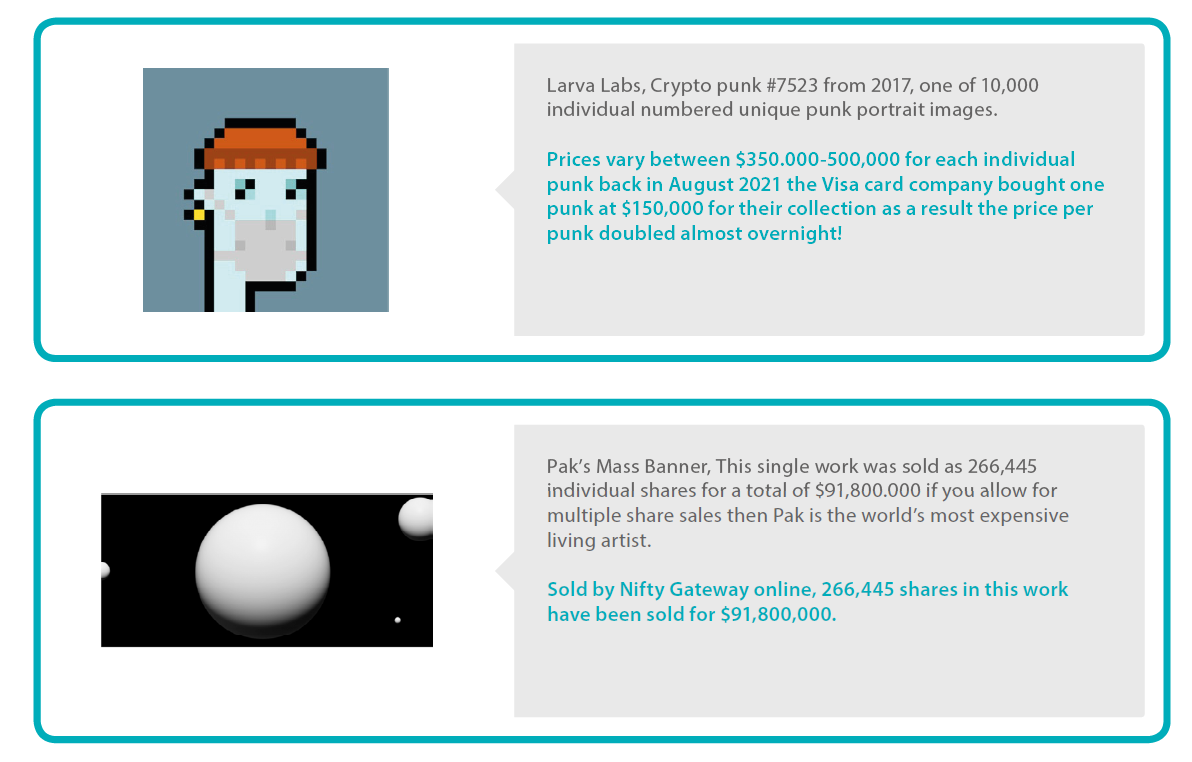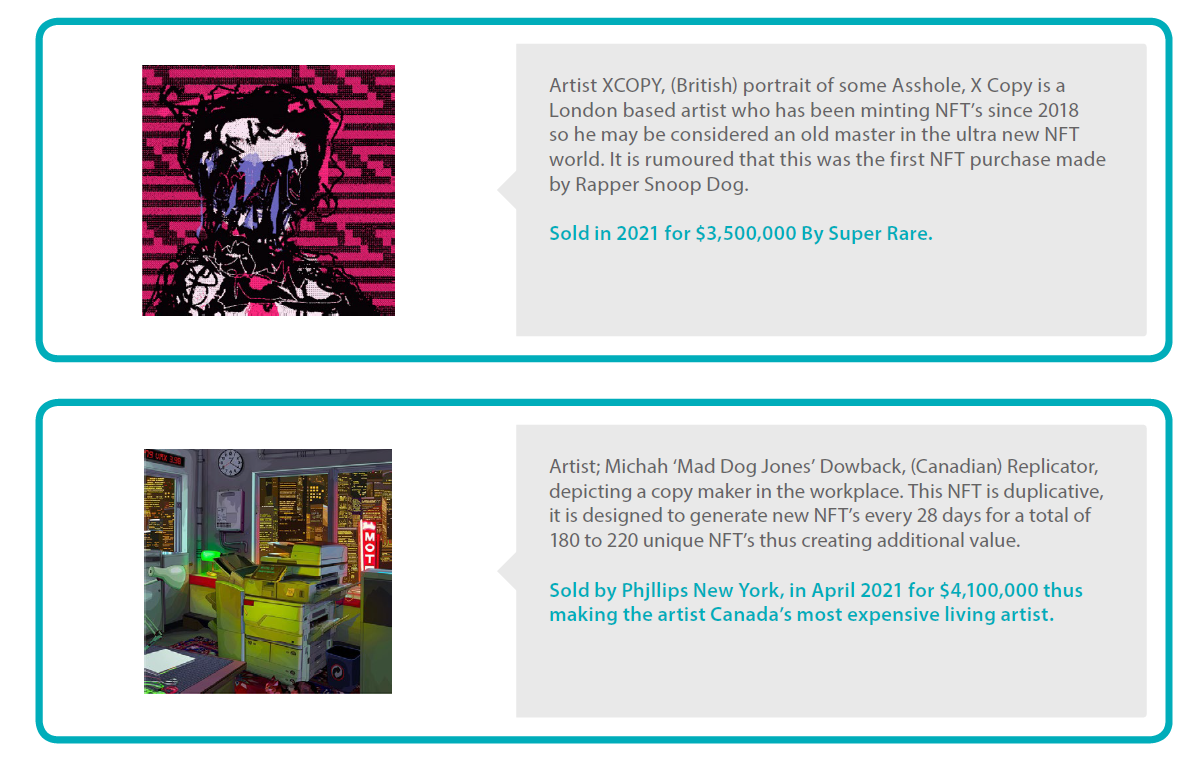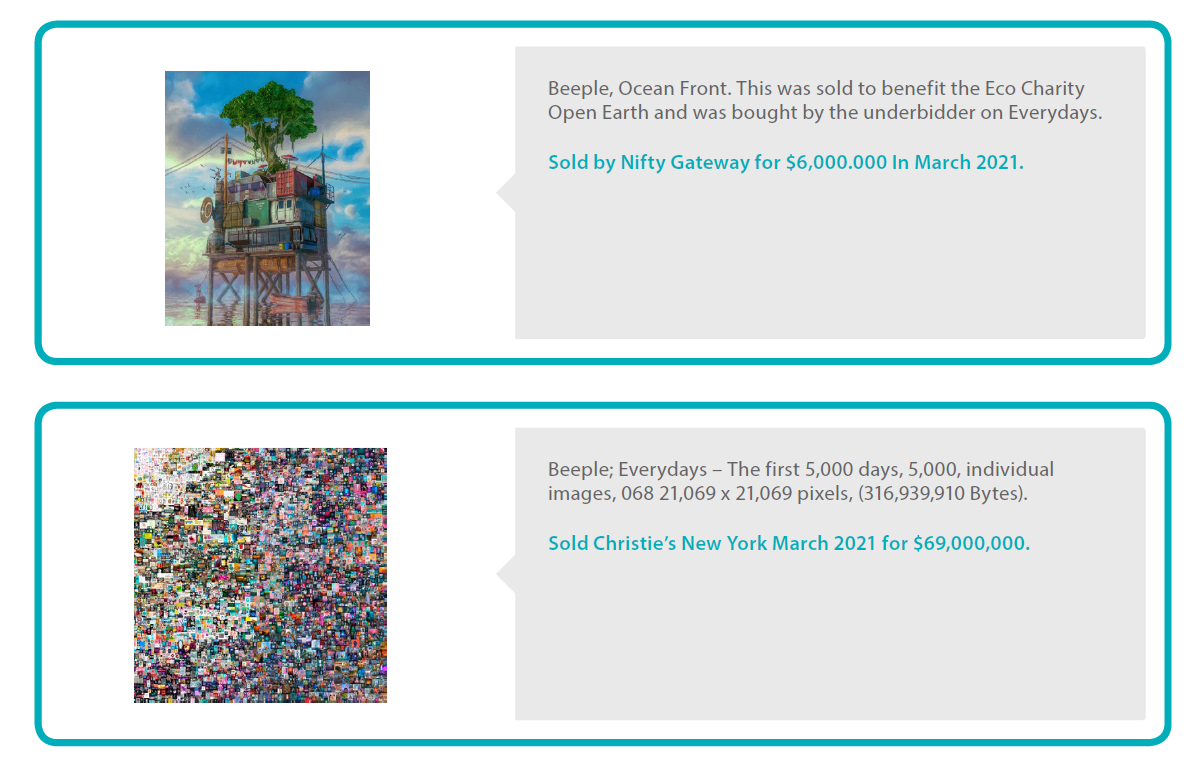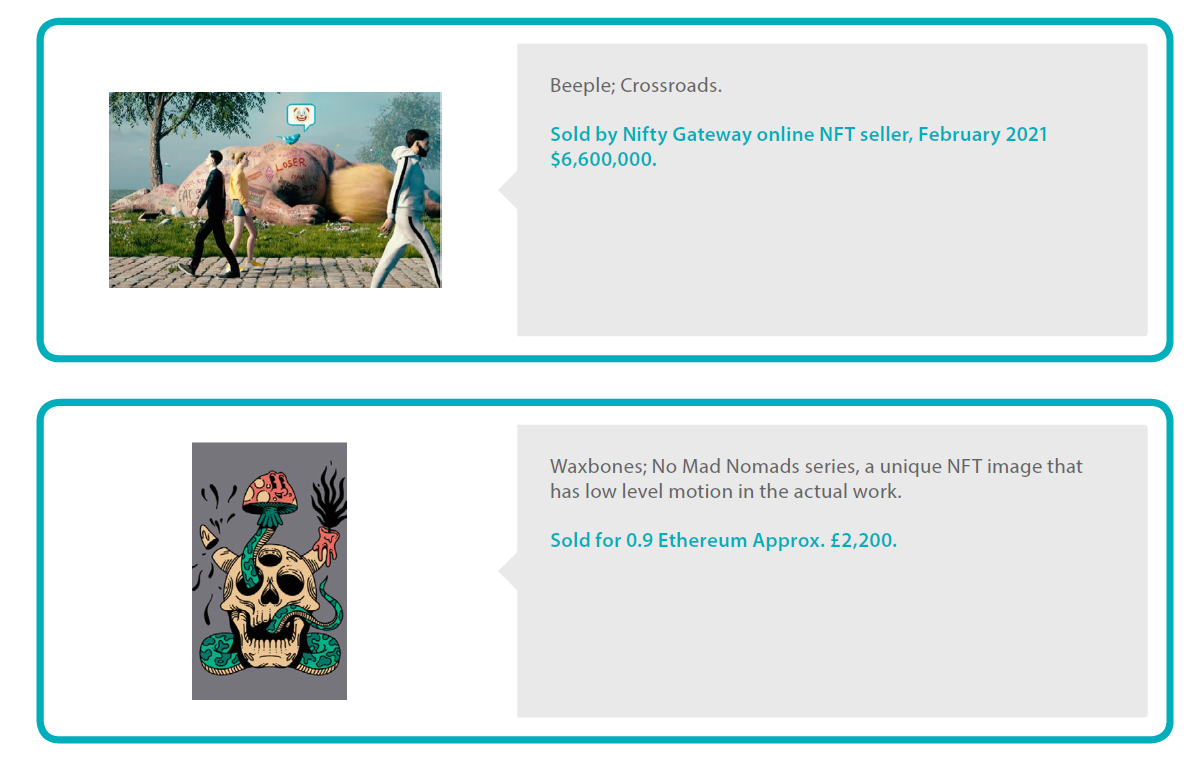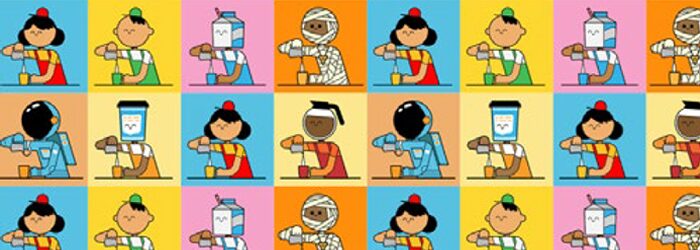Will they stand the test of time? Non-fungible tokens explained.
Non-fungible tokens (NFTs) seem to have come out of nowhere, however the technology has been around since at least 2014 if not before. The catalyst seems to have been Lockdown, if you can’t go to the saleroom then let the saleroom come to you, albeit virtually. Auctioneers, Galleries and Artists transformed their web presence almost overnight in order to offer NFTs that take the form of art and music and everything in between and are selling like hotcakes, some for a few £ and others for millions and millions of £, sometimes it feels like ‘Tulip Fever’ has re-visited us from the 17th-century…
What is an NFT?
An NFT is a digital asset recorded on the ‘Blockchain’ that represents actual objects such as art, music, in-game items and videos. An NFT is created, or “minted” from digital objects that represent both tangible and intangible items. They are bought and sold online, mainly using cryptocurrencies and are generally encoded with the same or similar software to that used by many crypto currencies. I think it’s best to assume that to be involved with buying NFTs you will have to embrace crypto currencies, the most common one used in NFTs is Ethereum. The value of Crypto currencies changes minute to minute day to day, before Christmas one Etheruem was worth around £3,000 to 1 Ethereum today its down to nearer to £2,200 to E1. Ethereum’s value is not only affected by the usual world events and demand but also by the sale of significant numbers of NFTs. Just like the Stock market, a collector offloading significant numbers of NFT’s creates downward price pressure on both crypto currency and the value of NFTs.
New NFTs are announced as ‘Drops’ and are either unique one off pieces or part of a limited edition exactly like limited edition prints, which interestingly were all the rage exactly 100 years ago back in 1922!
NFT ‘editions’ can be one off unique works or one from of a very limited run, large or small and each will have a unique identifying codes or features. Similar to Banksy print editions that are produced in total numbers of either 150 or 500, each print is individually numbered and carries formal certification and the ownerships changes are recorded, the smaller edition of 150 is also signed, typically numbered by hand in pencil, 7/150 the larger 150/500 etc.
What does fungible mean?
Physical money and cryptocurrencies are “fungible,” meaning they can be traded or exchanged for one another. For example I give you a fiver you give me one back and we are quits, i.e. they are fungible and equal in value – one dollar is always worth another dollar; one Bitcoin is always equal to another Bitcoin. Crypto’s fungibility makes it a trusted means of conducting transactions on the Blockchain.
What is Blockchain?
NFTs exist on a blockchain, which is a public ledger that records transactions and ownership. If you are already familiar with Crypto currency then blockchain is the same underlying process that makes cryptocurrencies possible.
Specifically, NFTs are typically held on the Ethereum blockchain, although there are other blockchains that support them as well.
Each individual unique NFT is different. Each one has a digital signature that makes it impossible for NFTs to be exchanged for or equal to one another (hence, non-fungible).
NFTs can have only ever have one owner at a time their unique data verifies their ownership and transfers ownership to new owners and artists can sign their artwork by including their signature in an NFT’s metadata.
Are NFTs here to stay?
I think yes, and they offer new opportunities and life enhancements. For example artists can now cut out the gallery and sell direct to the public and also engage with them face to face and online. Owners form communities who join together to discuss the artists they collect and follow. The discussions are not just about money, the NFT is very inclusive and no longer the exclusive domain of the mega wealthy collector and in buying NFT’s you support artists and get the inside track on the latest news and drops.
Also its all virtual you don’t have to worry about where to hang your piece, it lives in the secure ‘wallet’ on your phone and you can look at it anytime you like.
Who are the big names in NFT’s and why do collectors spend such huge sums of money on them?
The most famous and valuable digital artist is Mike Winklemann, better known as “Beeple” he made a composite of 5,000 daily drawings he made over five years to create perhaps the most famous NFT of the moment, “EVERYDAYS: The First 5000 Days,” which sold at Christies New York in March 2021 for £69 million. However you don’t have to own the Beeple NFT to see it, anyone can view the individual images—or even the entire collage of images online for free. So why are people willing to spend millions on something they could easily screenshot or download?
Owning the NFT allows the buyer to own the original item. Blockchain offers authentication and provenance which offers proof of ownership.
Artists can also program in future royalties so they can receive a percentage of sales whenever their art is sold to a new owner. This is an attractive feature for artists as generally they don’t always receive future proceeds after their art is first sold.
How do I Buy NFTs
First, you’ll need to get a digital wallet that allows you to store your new NFTs and cryptocurrencies. You’ll need to purchase some cryptocurrency like Ethereum, which you can buy using a credit card on platforms such as Coinbase, Kraken, eToro and PayPal. There will be fees so watch out for these, most exchanges charge a percentage of your transaction when you buy crypto.
Once you’ve got your wallet set up and funded, you are good to go. Currently, the largest NFT marketplaces are:
- OpenSea.io
- Rarible
- Foundation
These platforms are host to thousands of NFT creators and collectors, equally you can also go to auction as all the main International auction houses now have fully staffed departments dealing only with NFT’s with private and regular auctions and ‘Drops’. Also the bigger galleries such as Pace now have a separate NFT department.
Should I buy NFTs?
NFTs are risky because there is no discernible secondary market as yet and so there are no comparable secondary sale prices that you might be looking at if collecting mainstream art. It’s all just so new, so maybe it’s worth just dipping your toe in the water and go for individual artists selling direct like ‘Waxbones’ via the site knownorigin.io. I was very impressed when I heard him on Radio 4 recently, as he says himself ‘I design information and wayfinding for cities by day and expel my creative juices under the alias ‘Waxbones’. by night.. his prices start at around £300 for his limited editions.
Buying NFTs must be a personal decision and only if you have money to spare and remember that the value is based entirely on what someone else is willing to pay for it. An NFT when it comes to resale may go for less than you paid for it, or you might not be able to sell it at all if nobody wants it.
I heard a collector speaking on the radio recently, he owns 15 NFT’s which he has bought as part of his broader investment portfolio, he has valued them all at £O! This way as he says ‘the only way is up’!
There lots to study and see out there on NFTs so take a good look around and enjoy!







Jonathan started his career in the art world at the legendary London picture dealer Thomas Agnew and then to Christie’s in King Street as Director, Auctioneer and Head of Modern British pictures where in recognition of his wide knowledge base Jonathan was also appointed head of British and Irish Art, International Director of the 19th European picture department and Deputy Chairman.
